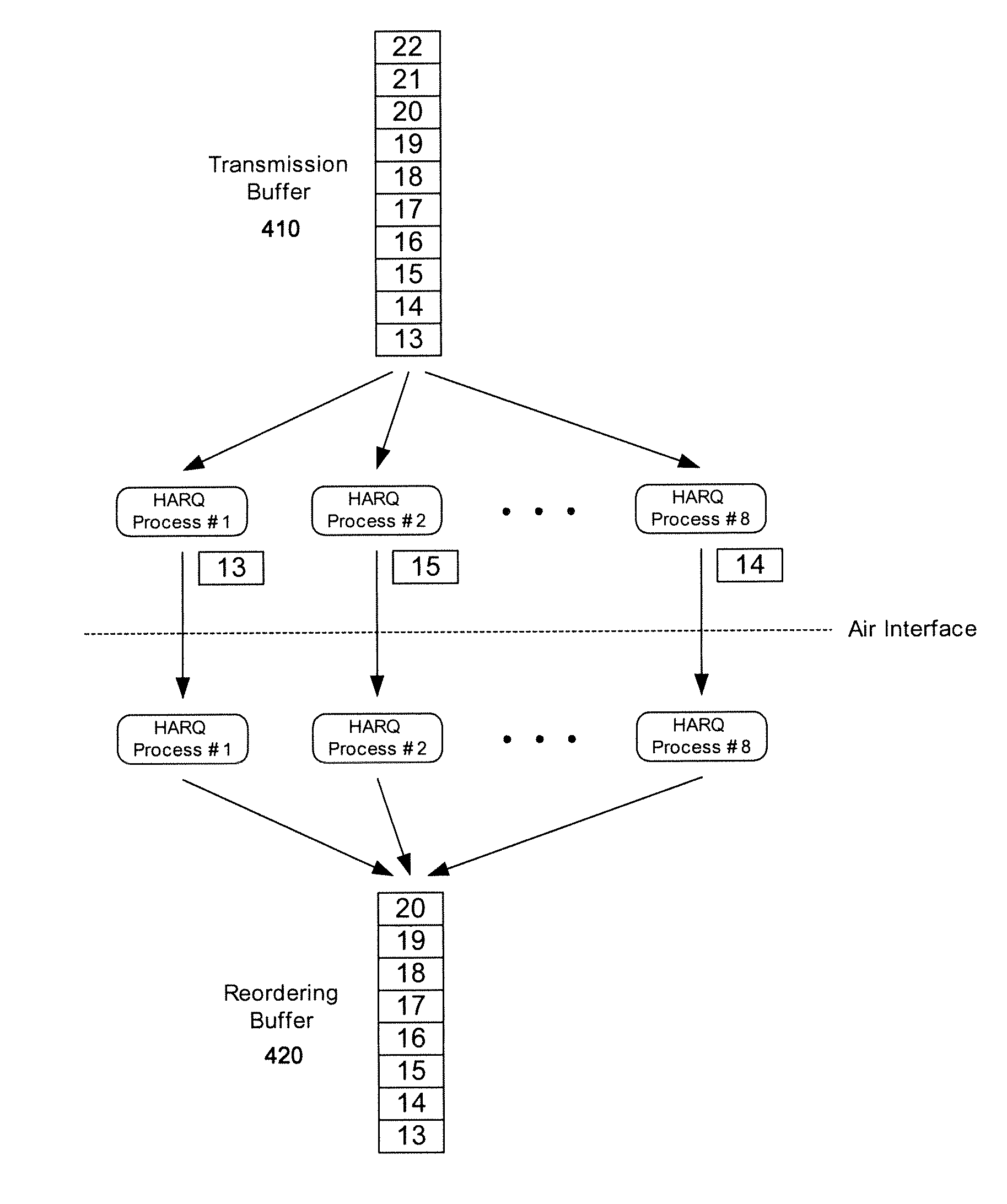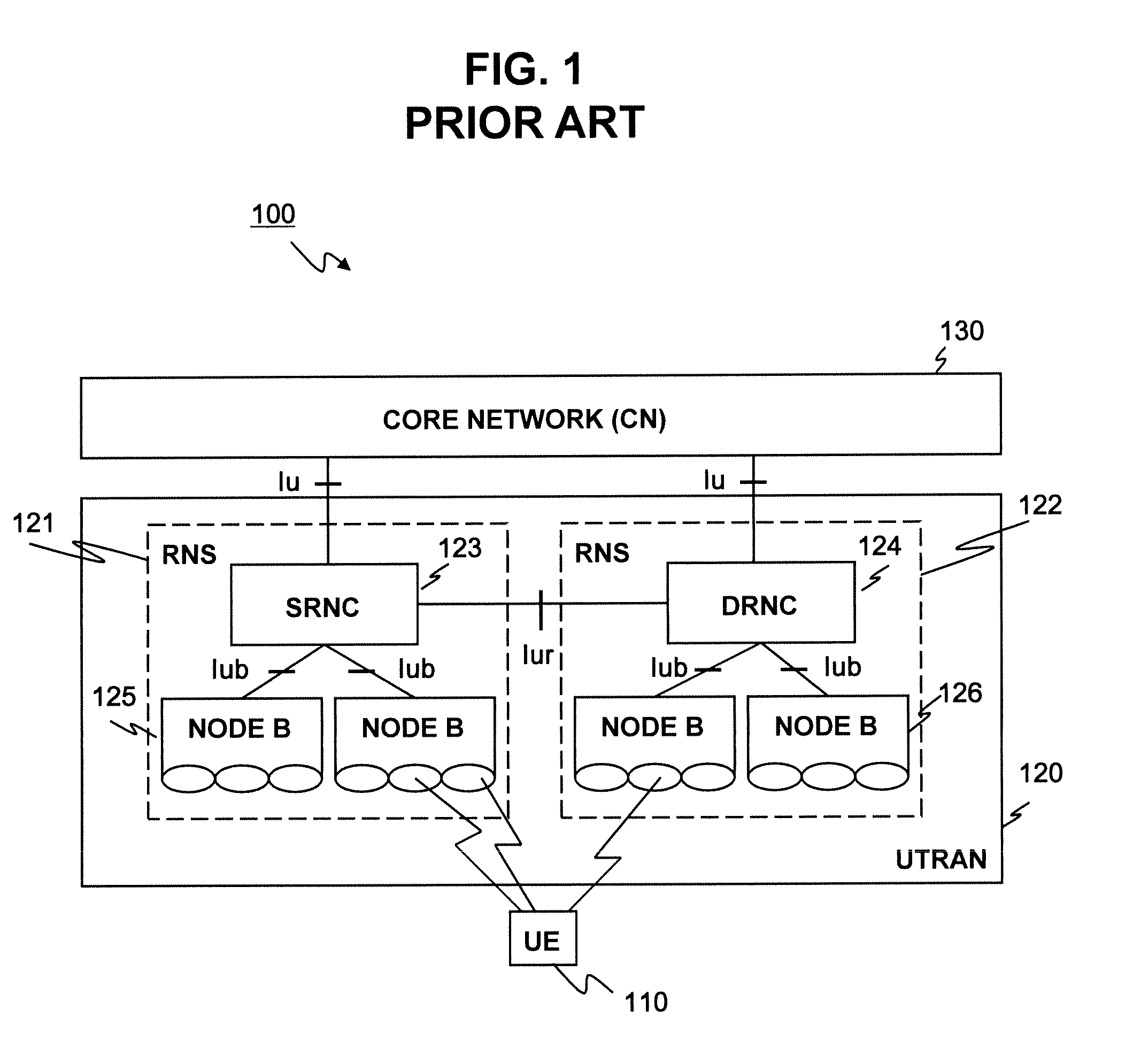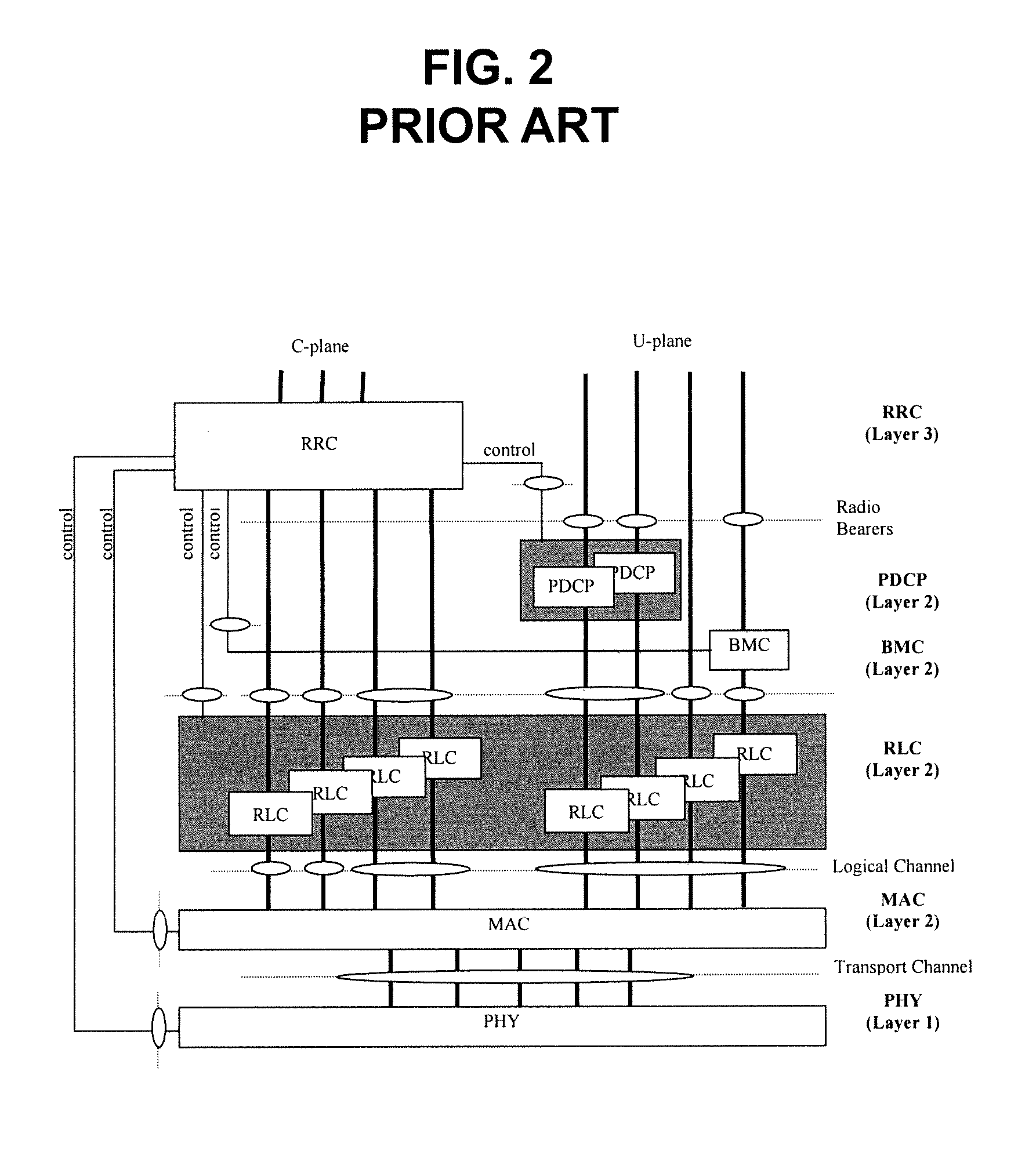Updating next-expected tsn and receiver window to avoid stall conditions
a receiver window and next-expected technology, applied in the field of wireless (radio) communication, can solve the problems of deteriorating overall data transmission efficiency, affecting the transmission efficiency of hsdpa system, and affecting the delivery of pdus
- Summary
- Abstract
- Description
- Claims
- Application Information
AI Technical Summary
Benefits of technology
Problems solved by technology
Method used
Image
Examples
Embodiment Construction
[0074]The present invention is described as being implemented in a W-CDMA mobile communications system. However, the present invention may also be adapted and implemented in communications systems operating under other types of communications.
[0075]A non-limiting exemplary embodiment of the present invention is depicted in FIG. 6, which is an improvement over the related art procedures shown in FIG. 5.
[0076]In step 610, a MAC-hs PDU with a transmission sequence number (TSN) having the sequence number (SN) (=a random number) value is received.
[0077]In step 620, the SN value is compared with the receiver window range, and if the SN value is within the range, the following step 630 is performed, but if outside the range, the following step 622 is performed.
[0078]In step 630, when the SN value falls within the receiver window range, this SN value is compared with the NET, and it is checked as to whether the MAC-hs PDU corresponding to this SN had been previously received. If this SN is ...
PUM
 Login to View More
Login to View More Abstract
Description
Claims
Application Information
 Login to View More
Login to View More - R&D
- Intellectual Property
- Life Sciences
- Materials
- Tech Scout
- Unparalleled Data Quality
- Higher Quality Content
- 60% Fewer Hallucinations
Browse by: Latest US Patents, China's latest patents, Technical Efficacy Thesaurus, Application Domain, Technology Topic, Popular Technical Reports.
© 2025 PatSnap. All rights reserved.Legal|Privacy policy|Modern Slavery Act Transparency Statement|Sitemap|About US| Contact US: help@patsnap.com



